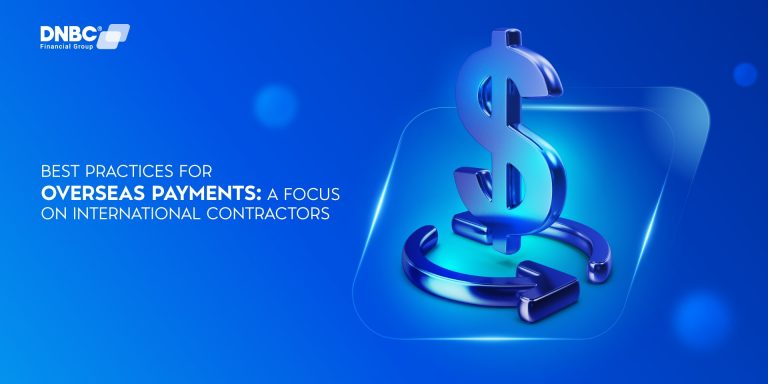Nowadays, businesses and individuals often engage in overseas payment transactions, whether for hiring international contractors, purchasing goods and services, or making cross-border investments.
According to the World Bank, global remittances reached $831 billion in 2022, reflecting the increasing reliance on international transactions.
With the rise of digital payment and fintech solutions, sending and receiving money globally has become easier. However, challenges such as high fees, exchange rate fluctuations, and security risks remain remarkable.
This article explores the best practices for overseas payment transactions, highlighting the best way to pay international contractors and the best way to make international payments securely and cost-effectively.
Best practices for secure and cost-effective overseas payments
According to the World Bank, global remittances were estimated at $860 billion in 2024, with developing countries receiving over $647 billion.
A McKinsey report states that cross-border payments are expected to grow at a CAGR of 5%, reaching $250 trillion in total value by 2027.

About 75% of businesses reported high fees as a major concern in overseas payment transactions, with traditional banks charging up to 5-10% per transaction.
An overseas payment refers to transferring funds from one country to another. This can be done through various channels, including banks, fintech services, cryptocurrency, and wire transfers.
Here are some of the best practices for secure and cost-effective overseas payments:
1. Choose the right payment method
Finding the best way to make international payments involves understanding the advantages and disadvantages of each method:
|
Payment Methods |
Pros |
Cons |
|
Bank Wire Transfers |
Secure, widely accepted |
High fees, slow processing time |
|
Online Payment Platforms |
Fast, user-friendly |
Conversion fees, limitations in some countries |
|
Cryptocurrency Payments |
Low fees, borderless transactions |
Regulatory risks, price volatility |
|
Multi-Currency Business Accounts |
Holds multiple currencies, reduces exchange risks |
Requires account setup |
|
SWIFT Payments |
Reliable for large sums |
Expensive, may take several days |

For businesses, the best way to pay international contractors depends on contract terms and payment preferences.
Online platforms like DNBC Financial Group offer ease of use and faster transactions, while bank wire transfers provide more security for large payments.
2. Minimize currency exchange risks
One of the biggest challenges in overseas payment is currency exchange fluctuations. Here’s how businesses and individuals can mitigate risks:
- Use a multi-currency account: Holding funds in multiple currencies helps avoid unnecessary conversion fees.
- Monitor exchange rates: Several financial services offer real-time exchange rate monitoring.
- Lock in rates with forward contracts: If you regularly make overseas payments, forward contracts allow you to set a fixed exchange rate for future transactions.
- Compare exchange rates across providers: Traditional banks typically offer lower exchange rates than fintech services.
3. Reduce transaction fees
The cost of overseas payment transactions can vary significantly. To avoid excessive fees:
- Choose Fintech solutions: Digital payment providers like DNBC Financial Group charge lower fees than traditional banks.
- Choose the right payment network: For example, ACH transfers are greatly cheaper than SWIFT payments. While SWIFT fees can range from $15 to $50 per transaction, ACH fees typically range from a few dollars to a few cents.

4. Ensure compliance with international regulations
International money transfers are subject to strict financial regulations, including AML (Anti-Money Laundering) laws and KYC (Know Your Customer) requirements.
To ensure compliance:
- Use licensed payment providers that adhere to regulatory standards.
- Provide accurate details (IBAN, SWIFT/BIC codes) to avoid transaction rejections.
- Be aware of country-specific restrictions, especially in regions with strict foreign exchange controls.
5. Speed up processing time
For time-sensitive payments, such as payroll for remote employees, businesses must ensure efficient processing. The best way to pay international contractors quickly includes:
- Using real-time payment networks: SEPA Instant and Faster Payments complete transactions in minutes.
- Choosing fintech over traditional banks: Digital platforms process payments faster.
- Pre-scheduling payments: Ensuring payments are made on time, avoiding last-minute delays.
How to find the best way to pay international contractors
Paying international contractors efficiently and securely is crucial for businesses operating globally.
With the rise of remote work and international collaborations, finding the best payment method can significantly impact your operations.
Here are some key considerations and statistics to help you make an informed decision.
1. Wire transfers
Wire transfers are a popular method for international payments due to their reliability and security. According to a report by the World Bank, global remittances reached $702 billion in 2020, with a big portion facilitated through wire transfers.
However, wire transfers can be costly, with fees ranging from $15 to $50 per transaction, depending on the bank and destination.
2. Online payment platforms
Online payment platforms like DNBC Financial Group offer convenient and cost-effective solutions for paying international contractors. These platforms often provide competitive exchange rates and lower fees compared to traditional banks.

A study by Statista shows that the global digital payment market is projected to reach $8.1 trillion by 2024, highlighting the growing popularity of these platforms.
3. Consider local payment methods
Understanding the preferred payment methods in the contractor’s country can enhance efficiency and satisfaction. For example, in some regions, mobile payments or local bank transfers may be more widely accepted and cost-effective.
5 FAQs on overseas payments
1. What is the best way to pay international contractors securely and cost-effectively?
The best way to pay international contractors depends on factors such as fees, processing times, and security.
Online payment platforms like DNBC Financial Group provide faster transactions and lower fees compared to traditional bank wire transfers. Wire transfers are best for large payments due to their security but can cost $15-$50 per transaction and take several days.
2. How can businesses reduce currency exchange risks when making overseas payments?
To minimize currency exchange fluctuations, businesses can:
- Use multi-currency accounts to hold and pay in different currencies, avoiding frequent conversions.
- Monitor exchange rates in real-time using financial services.
- Lock in exchange rates with forward contracts for predictable costs.
- Compare exchange rates across providers, as fintech solutions often offer better rates than traditional banks.
3. What are the average costs of overseas payments through different methods?
- Bank Wire Transfers (SWIFT): $15-$50 per transaction, slow processing (3-5 days).
- Online Payment Platforms: 1-3% per transaction, faster processing (same-day to 2 days).
- Cryptocurrency Payments: Low fees but volatile; suitable for tech-savvy users.
- ACH Transfers (U.S.), SEPA (EU): Cheaper than SWIFT, often under $5 per transaction.
4. How can businesses speed up international payments for contractors?
- Use real-time payment networks like SEPA Instant or Faster Payments, which process transactions in minutes.
- Choose fintech solutions over traditional banks for faster processing times.
- Pre-schedule payments to ensure timely salary deposits for remote employees.
5. What are the most common compliance requirements for overseas payments?
To ensure compliance with AML and KYC regulations, businesses should:
- Use licensed payment providers that follow international regulatory standards.
- Provide accurate banking details (IBAN, SWIFT/BIC) to avoid payment delays.
- Be aware of country-specific restrictions, especially in regions with strict foreign exchange controls.
DNBC Financial Group is your trusted provider in international money transfer
- Get 100% free 1-on-1 support
- 100% free account opening
- Seamless onboarding process
Or please contact DNBC
![]() Email: [email protected]
Email: [email protected]
![]() Phone Number:
Phone Number:
- +65 6572 8885 (Office)
- +1 604 227 7007 (Hotline Canada)
- +65 8442 3474 (WhatsApp)



 DNBC Team
DNBC Team






